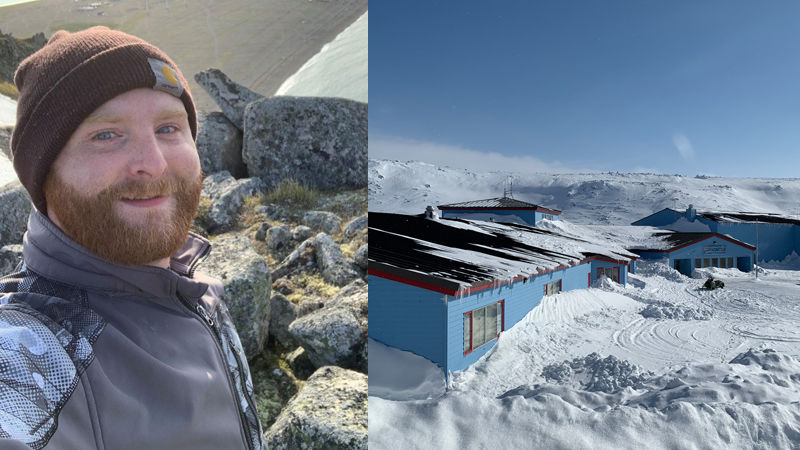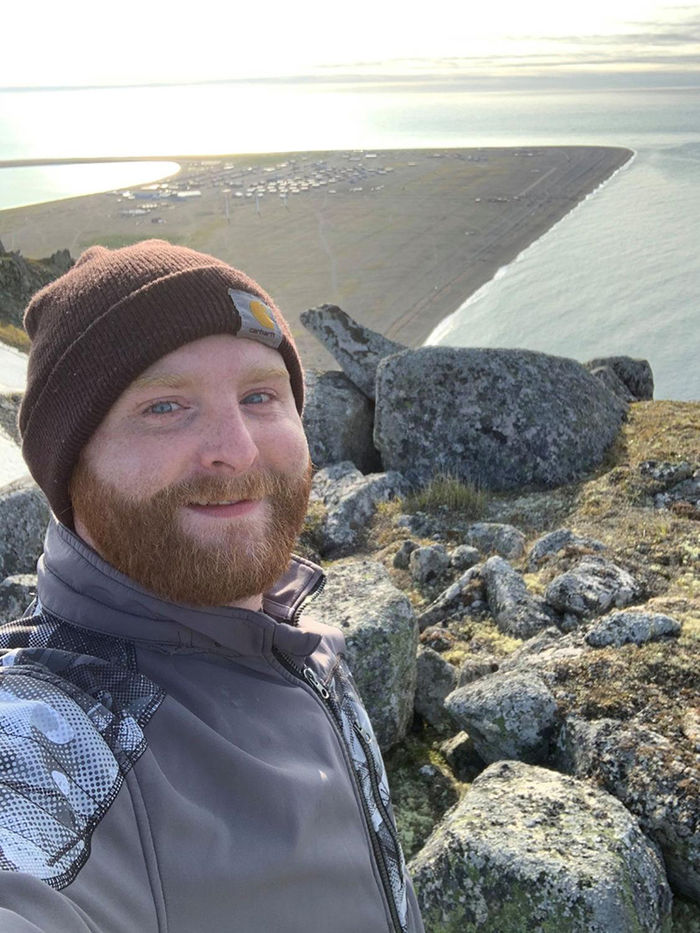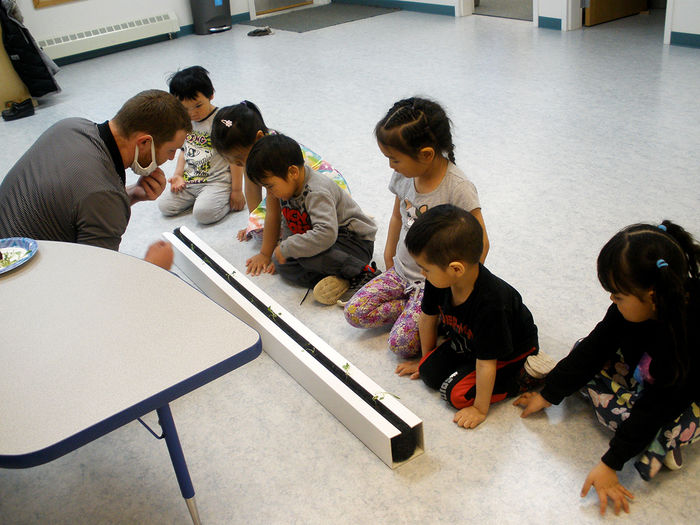

This dialog contains the full navigation menu for this site.

Gambell, Alaska, is located on St. Lawrence Island in the Bering Sea. It is a mere 36 miles from Siberia.
In the summertime, it’s light for nearly 24 hours a day. In the winter, it’s dark for just as long, and it often reaches a windchill of negative 60 degrees.
The only way on and off the island is by plane.
This is where Courtland Pannebaker, a 2016 Penn State Altoona graduate, calls home—where he is content, challenged, and fulfilled.

The Gambell School District in the winter
Pannebaker was only going to the education career fair at University Park to get some interview experience. He never expected to walk away with a job offer. But that’s exactly what happened that day, shortly after he graduated from Penn State Altoona with a degree in elementary and early childhood education.
He had a lot to consider in 24 hours, the time the Bering Strait School District gave him to accept or decline a year-long teaching position: a huge decision for anyone, let alone a young man straight out of college.
“I’m adventurous, and my personality leads me to do new things and meet new people. I went to the Bering Strait booth, and it just sounded so interesting. When I told my parents I was offered the position, my mom encouraged me to take it. She said I could do anything for a year, and I agreed.”
So, Pannebaker said yes and found himself quickly packing for an adventure in, essentially, a new world. He had about two months to get ready, which included finding a place to live, learning as much about the island and its schools as possible, finding and buying warm, winter clothing, and stocking up on survival items and food.

Pannebaker on St. Lawrence Island. The entire village of Gambell can be seen in the background.
As prepared as he was, it was still quite a shock when he arrived in person. In fact, new teachers have been known to step off the plane, take one look around, and step right back on. But Pannebaker was fascinated from the jump.
St. Lawrence Island is roughly the size of New Jersey. About 1,400 people live between the island’s two villages of Gambell and Savoonga. Its residents are nearly all or part Alaska Native. The isolation of the island has helped maintain their traditional Yup’ik culture, and while most residents are bilingual, Siberian Yup’ik is the first language.
“It's a very difficult language for me to pick up. My mouth just can't form some of those sounds,” laughs Pannebaker. “After six years here, I know about a fourth of the language and am comfortable with simple sentences, but long sentences and phrases are still challenging.”
The island’s economy is largely based on subsistence harvests from the sea, and walrus-hide boats are still used to hunt. Gambell has just one unpaved “road” running through town, and instead of cars or trucks, villagers use four-wheelers, boats, or their own feet for transportation.
While communities have at least one store stocked with goods, the items must be flown in by bush plane, and that affects availability and prices, which can be up to 75% above what they are stateside. That makes Amazon Prime Pannebaker’s best friend. But with weather that is severe and unpredictable, planes often don’t make it to the villages when they are scheduled.
It’s a harsh environment and economically depressed area, but Pannebaker has fallen in love with his home.
He has been a Head Start teacher for the Bering Strait School District for the last six years, working with children ages 3 to 5. His classes have had anywhere from nine to 21 students. One of Pannebaker’s main goals is to give his students a foundation for learning.
“Here in the villages, it is one of the most important programs, in my opinion, to get kids interested and excited for learning and to have a great start on their education. When I see my students coming to my classroom happy and excited, that just proves that everything I'm doing here is paying off.” He says there are a lot of barriers to students staying in school, but it’s his job to encourage and prepare them for careers on the island or off.

Pannebaker discusses plants with some of his Head Start students
Pannebaker is sensitive to the culture of his students, so that plays foremost into his lesson planning. He uses both English and Yup’ik in the classroom. “I have to consider the values their lifestyle dictates. I'm also often changing what's in the curriculum to match their culture and to make things relatable to them. A lot of our students never get to leave this island, so they don't understand what Walmart is or even things such as a circus or a zoo.”
Pannebaker faces other challenges in terms of flexibility and creativity working in such a secluded area with little to no resources. “I often have to think on my feet, use what little I have, and do some outreach in the community to get supplies for my students.”

Pannebaker with one of his students
Yet he’s rarely discouraged, saying his students keep him excited and interested to show up each day. He even welcomes the difficulties, which have revealed his personal strength and ability to persevere. He adds that he feels he’s serving a bigger purpose, giving back, and making a difference by teaching with the BSSD.
Pannebaker’s hard work clearly has not gone unnoticed as he was recently named the Alaska Head Start Association’s Teacher of the Year. Out of hundreds of nominations across the entire state, he was selected by a committee of 16 Head Start directors.
“I was ecstatic when I found out. It just proves to me that I am doing what I am supposed to be doing where I am supposed to be doing it. All of the time and work I put into what I can improve and how I can help these kids learn more is paying off—people think I’m doing good work.”
Pannebaker doesn’t have plans to leave the island any time soon. He has created a home there, and he’s folded himself into its community where he’s made friends, keeps busy coaching youth running and skiing, and has been able to take part in native activities like whale hunting.
“I feel blessed to be welcomed into this community and to have this experience. I don't think I could have picked a more interesting place to go to. I still find it as fascinating as the day I got off the plane. I'm still learning so many new things every day.”


